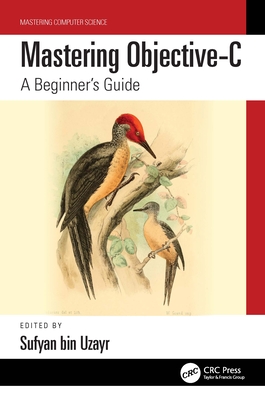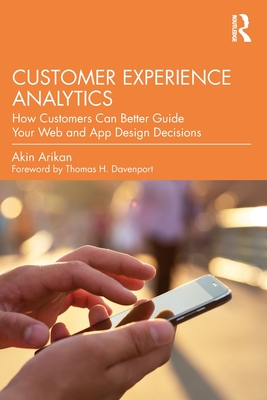图书简介
This book contains highly effective ways to teach coding and computational thinking skills throughout primary and secondary schooling. It outlines a research informed path for students from birth to 18 years, identifying key skills and learning activities. Based on global perspectives and research at each stage, it outlines how these findings can be applied in the classroom.Teaching coding to students in K-12 has been a skillset that has been debated across educational jurisdictions globally for some time. The book provides examples of schools that are teaching coding to students in engaging and relevant ways, delivering well thought out compulsory curriculums. Additionally, it provides examples of schools where coding is not mandated in the curriculum and is taught in an ad-hoc manner. Through the full discussion of all of these varied examples, the book presents both sides of the serious and ongoing debate in the field as to whether coding should be taught in an explicit way at all . The increasing school of thought that teaching coding is a skill that is already obsolete, and the focus should be on computational thinking is completely examined and presented. In this book, both sides of the argument, as well as the specific, meticulous research underlying each side, are given equal weight. The debate is a serious one and requires a clearly defined thematic response with evidence on all sides of the argument presented rationally. This book does just that. Created by carefully selected authors from around the world, it will be a highly studied research reference.
1. Introduction – The need for programming and computational thinking from Early Childhood Education through to Secondary schooling..- Section One. Early childhood education .- 2. Children (aged 3-5) learning mathematics through programming, thinking and doing, or just doing?.- 3. Teaching Coding in Kindergarten: Supporting Students’ Activity with Robot Coding Toys.- 4. Programming environments for the development of computational thinking in preschool education: a systematic literature review.- Section Two. Elementary/Primary school .- 5. Developing Computational Fluency via Multimedia Stories.- 6. Scaffolding engagement with educational technologies to develop computational thinking in Year 1 girls.- 7. Enhancing Computational Thinking through App Design in Primary Schools.- 8. Program, learn and play: a course of extracurricular activities in Scratch programming for students in grades 3–6.- 9. Integrating programming in other subjects at primary level – tool, glue or ideation.- 10. Introducing Programming Concepts through the Bebras Tasks in the Primary Education.- 11. Supporting primary students with disabilities and neurological differences in developing digital thinking skills through an inclusive game making club.- 12. Game Making and Coding Fluency in a Pri-mary Computing Context.- Section Three. Secondary/High school .- 13. The problem with programming: An overview..- 14. Expanding teacher capacity and student engagement in digital literacies in the primary classroom: an informal explorative reflection.- 15. Why and how to teach physical computing: Research and practice in computer science education at secondary schools.- 16. Coding Across the Curriculum: Challenges for non-specialist teachers.- 17. Teaching High School Students Artificial Intelligence by Programming Chatbots.- 18. Teaching Coding and Computational Thinking with Model Train Robotics: Social Factors That Motivate Students to Learn Programming.- 19. Initial steps in teaching Python at lower secondary school using the platform Codeboard.io.- 20. Creating Mobile Applications with App Inventor Adopting Computational Action .- 21. Learning Computational Thinking in Second-ary School (Year 8) in Germany in International Comparison – Results from ICILS 2018.- 22. Computational Thinking in pre-vocational education: A focus on coding unplugged .- 23. A Case of Girls Building Robots or Robots Building the Girls?.- 24. Applying hybrid programming in high schools: An empirical study analyzing teachers’ opinions.- 25. Hybrid VR programming – Extending the Notional Machine for C .- 26. Cognitive Influences on Learning Programming.- 27. Where next for coding in schools?.-
Trade Policy 买家须知
- 关于产品:
- ● 正版保障:本网站隶属于中国国际图书贸易集团公司,确保所有图书都是100%正版。
- ● 环保纸张:进口图书大多使用的都是环保轻型张,颜色偏黄,重量比较轻。
- ● 毛边版:即书翻页的地方,故意做成了参差不齐的样子,一般为精装版,更具收藏价值。
关于退换货:- 由于预订产品的特殊性,采购订单正式发订后,买方不得无故取消全部或部分产品的订购。
- 由于进口图书的特殊性,发生以下情况的,请直接拒收货物,由快递返回:
- ● 外包装破损/发错货/少发货/图书外观破损/图书配件不全(例如:光盘等)
并请在工作日通过电话400-008-1110联系我们。
- 签收后,如发生以下情况,请在签收后的5个工作日内联系客服办理退换货:
- ● 缺页/错页/错印/脱线
关于发货时间:- 一般情况下:
- ●【现货】 下单后48小时内由北京(库房)发出快递。
- ●【预订】【预售】下单后国外发货,到货时间预计5-8周左右,店铺默认中通快递,如需顺丰快递邮费到付。
- ● 需要开具发票的客户,发货时间可能在上述基础上再延后1-2个工作日(紧急发票需求,请联系010-68433105/3213);
- ● 如遇其他特殊原因,对发货时间有影响的,我们会第一时间在网站公告,敬请留意。
关于到货时间:- 由于进口图书入境入库后,都是委托第三方快递发货,所以我们只能保证在规定时间内发出,但无法为您保证确切的到货时间。
- ● 主要城市一般2-4天
- ● 偏远地区一般4-7天
关于接听咨询电话的时间:- 010-68433105/3213正常接听咨询电话的时间为:周一至周五上午8:30~下午5:00,周六、日及法定节假日休息,将无法接听来电,敬请谅解。
- 其它时间您也可以通过邮件联系我们:customer@readgo.cn,工作日会优先处理。
关于快递:- ● 已付款订单:主要由中通、宅急送负责派送,订单进度查询请拨打010-68433105/3213。
本书暂无推荐
本书暂无推荐













